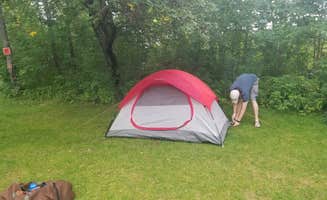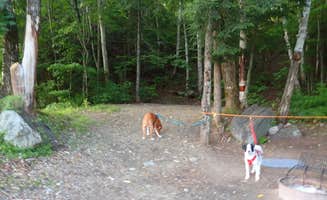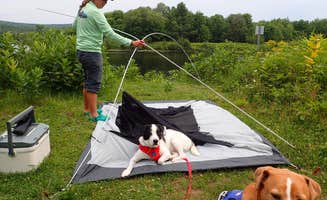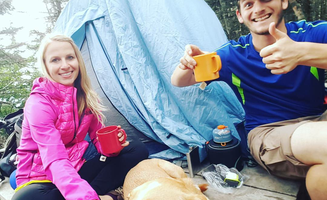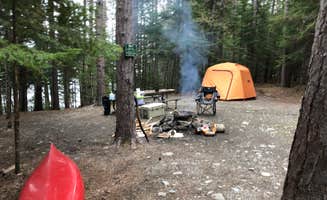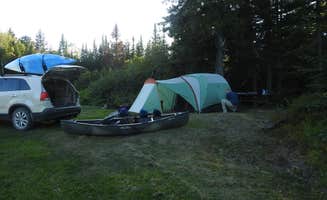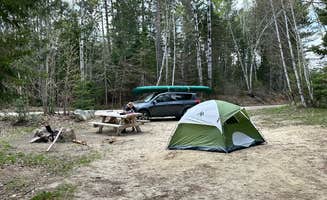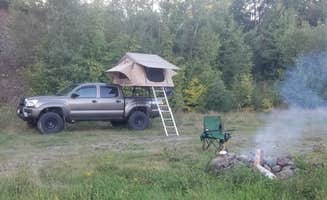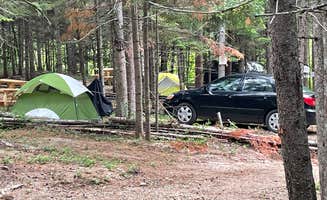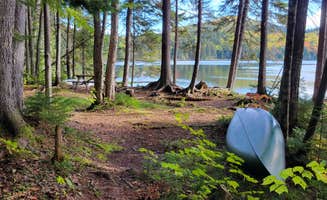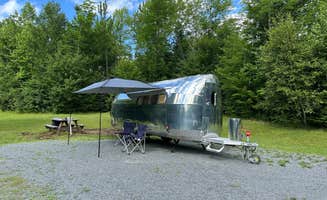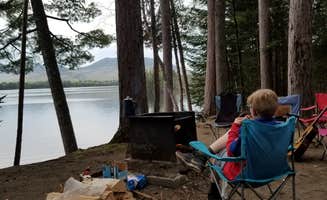Caratunk, Maine sits at approximately 600 feet elevation along the Kennebec River, serving as a crossing point for Appalachian Trail hikers. The region's camping season typically runs from late May through mid-October, with July and August seeing average daytime temperatures around 75°F. Frost can occur into early June at higher elevations, requiring campers to prepare for temperature variations across seasons.
What to do
Wildlife watching opportunities: The area around Flagstaff Hut provides excellent opportunities for viewing wildlife. "We saw loons and bald eagles on the lake daily," notes one camper at nearby Cathedral Pines. The quiet waterfront locations throughout the region are ideal for early morning wildlife observation.
Fishing access: Multiple waterways around Caratunk offer diverse fishing experiences. "This is a very beautiful lake, quiet, full of fish, easy kayaking, or just sitting on the water's edge," reports a visitor to Indian Pond Campground. The Dead River, Flagstaff Lake, and Indian Pond all support different fish species.
Hiking trails: The region connects to several notable trail systems. "Stafford brook trail to hike to the top of Bigelow... you can easily hike from your campsite to the top of the mountain and back within a day," mentions a camper at Round Barn Campsites. Trails range from easy waterfall paths to challenging mountain ascents.
Paddling routes: Numerous lakes and rivers create paddling options for all skill levels. "The cove makes for safe swimming away from the wind and waves offshore," notes another Round Barn visitor describing the protected paddling areas. Access points with gradual shorelines make launching kayaks and canoes straightforward at many locations.
What campers like
Private waterfront sites: Campers consistently praise the waterfront access at many campgrounds. "Sites along Flaggstaff Lake have some spectacular views," mentions one visitor to Cathedral Pines Campground. The combination of water access and privacy ranks highly in reviews.
Clean facilities: Maintained bathrooms and shower facilities receive positive mentions. "Facilities are bright and clean. Every site has its own 'fire box' with cooking grate," notes another Cathedral Pines camper. Even at more rustic locations, the maintenance of basic amenities gets recognition.
Night sky viewing: The lack of light pollution creates exceptional stargazing conditions. "The stars are beautiful to boot!" reports a visitor to Philbrick Landing. Many campers mention the quality of night skies as a highlight of their stays.
Authentic Maine environment: The rustic, less-developed nature of the region appeals to many. "If you are looking for a camp ground but off the beaten trail look no further," writes a visitor to Indian Pond Campground. The distance from population centers creates a distinct camping atmosphere compared to more developed areas.
What you should know
Road conditions vary significantly: Many campgrounds require travel on logging roads or unpaved access points. "The Road is rough, but with care you can get there, just go slow," advises a camper about Round Barn Campsites. High-clearance vehicles are recommended for certain locations, particularly after rain.
Limited supplies nearby: The remote nature of camping near Caratunk means preparation is essential. "Bring everything you need with you, do your food shopping on the way," suggests a visitor to Indian Pond Campground. While some general stores exist, selection is limited and prices higher than urban areas.
Cell service limitations: Most areas have minimal or no cell coverage. "There are no electrical outlets or cell service, so you are off the grid," notes a visitor to Flagstaff Hut. Download maps and bring physical guidebooks rather than relying on digital navigation.
Reservation requirements: The limited number of established sites means planning ahead. "No online reservation you must call or email them," mentions a camper about Webb's Campground. Many smaller campgrounds still operate with phone-based reservation systems.
Tips for camping with families
Campground activities: Some locations offer structured recreation opportunities for children. "Game room, pool, you can walk a holiday if you would like. Great entertainment on the weekends," notes a visitor to Happy Horseshoe Campground. Family-oriented campgrounds typically schedule weekend events during peak summer months.
Protected swimming areas: Several campgrounds feature designated swimming zones. "There is a campers only and a public beach, opportunities for canoeing and kayaking Flagstaff lake with rentals available if you didn't bring your own," reports a Cathedral Pines camper. Beaches with gradual entry points work best for families with younger children.
Wildlife education opportunities: Animal sightings create learning experiences. "We were able to see moose regularly during evening hours just a few miles from camp. When leaving camp make a left, drive aprox 15 mins and you are sure to see them," shares a Happy Horseshoe visitor. Early evening drives along less-traveled roads often yield moose sightings.
Tips from RVers
Site size considerations: Campgrounds vary significantly in accommodation for larger vehicles. "The majority of campsites are right on the Dead River in a beautiful region in Maine called The Forks. This area is an outdoor paradise with tons of things to do kayaking, white water rafting, hunting, fishing, hiking, and nature viewing," reports a visitor to Webb's Campground, noting the variety of RV options from basic to full hookups.
Road noise awareness: Some campgrounds experience traffic noise despite remote locations. "The biggest complaint is the loud road noise from big logging trucks. The campground is located directly off Route 201 in West Forks which makes for easy access into the park," continues the Webb's Campground review. Sites further from main roads provide quieter experiences.
Limited hookup availability: Full-service sites are concentrated at a few campgrounds. "Sites are mostly grass and the road is smooth gravel devoid of any potholes. There are some trees for shade but not many and there is not much privacy between campsites," the Webb's visitor adds, highlighting that waterfront sites often have fewer amenities.


